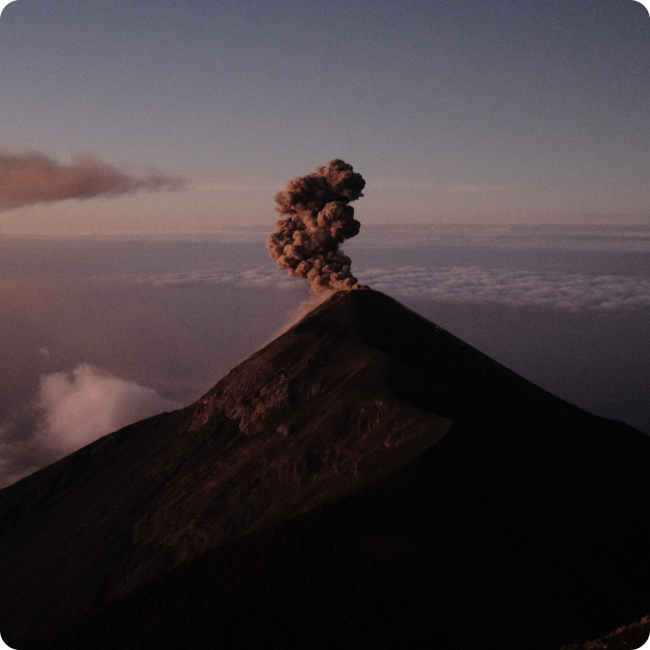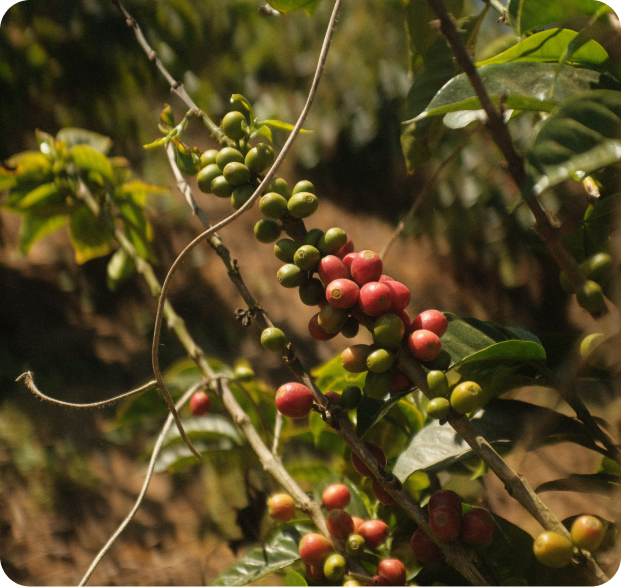So, why coffee?
Biota exists to save the future of coffee.




Biota exists to save the future of coffee.
Us vs. the status quo
Shade
More
Less
In recent decades, Latin American coffee farms have been devastated by roya (rust). This fungal disease attacks the leaves of coffee plants, coating them in an orangey powder that prevents photosynthesis.
On sun-grown coffee farms, plants are spaced close together, making it easy for roya fungal spores to spread from one plant to the next. Ironically, the use of fungicides to combat roya kills the same beneficial species, including white halo fungus, which naturally attacks the roya fungus.
But we, and many ecologists, think there is a better solution - one that starts with shade. A core pillar of Biota’s playbook is planting native tree species to control pests and diseases while maintaining the complex ecological relationships between plants, fungi, insects, and wildlife.
Diversity
More
Less
Conventional coffee farms clear native flora and fauna to make room for tight rows of plants sowed and harvested continuously without leaving time for the soil to rest.
In contrast, Biota grows coffee the way nature intended. Beyond reintegrating native tree species, our technical team helps farmers intercrop coffee plants with beneficial flowers and legumes that naturally fix atmospheric nitrogen (a key nutrient for plant health) and attract pollinators like bees and birds.
We envision a future where our farmer network is able to transition from extractive coffee monocultures to biodynamic systems with diverse income streams from multiple crops, including cacao, tea, rubber, and vanilla.
Diet
More
Less
On a conventional coffee farm, approximately 250 pounds of chemical fertilizers, herbicides, and pesticides are applied to every acre. While these products manage pests and diseases in the short term, they destroy the beneficial microbial communities that thrive in healthy soil.
Rather than feed plants processed “junk food,” Biota helps farmers better understand the nutrients and minerals their dirt craves and tailor natural diets that meet its needs.
Circularity
More
Less
We believe in full crop utilization, which means educating farmers on how to make the most of the coffee plants they don’t sell. For example, incorporating discarded coffee cherry husks into bokashi and vermicompost is an easy way to enrich the soil and reduce the reliance on chemical fertilizers.
Shade
In recent decades, Latin American coffee farms have been devastated by roya (rust). This fungal disease attacks the leaves of coffee plants, coating them in an orangey powder that prevents photosynthesis.
On sun-grown coffee farms, plants are spaced close together, making it easy for roya fungal spores to spread from one plant to the next. Ironically, the use of fungicides to combat roya kills the same beneficial species, including white halo fungus, which naturally attacks the roya fungus.
But we, and many ecologists, think there is a better solution - one that starts with shade. A core pillar of Biota’s playbook is planting native tree species to control pests and diseases while maintaining the complex ecological relationships between plants, fungi, insects, and wildlife.
Diversity
Conventional coffee farms clear native flora and fauna to make room for tight rows of plants sowed and harvested continuously without leaving time for the soil to rest.
In contrast, Biota grows coffee the way nature intended. Beyond reintegrating native tree species, our technical team helps farmers intercrop coffee plants with beneficial flowers and legumes that naturally fix atmospheric nitrogen (a key nutrient for plant health) and attract pollinators like bees and birds.
We envision a future where our farmer network is able to transition from extractive coffee monocultures to biodynamic systems with diverse income streams from multiple crops, including cacao, tea, rubber, and vanilla.
Diet
On a conventional coffee farm, approximately 250 pounds of chemical fertilizers, herbicides, and pesticides are applied to every acre. While these products manage pests and diseases in the short term, they destroy the beneficial microbial communities that thrive in healthy soil.
Rather than feed plants processed “junk food,” Biota helps farmers better understand the nutrients and minerals their dirt craves and tailor natural diets that meet its needs.
Circularity
We believe in full crop utilization, which means educating farmers on how to make the most of the coffee plants they don’t sell. For example, incorporating discarded coffee cherry husks into bokashi and vermicompost is an easy way to enrich the soil and reduce the reliance on chemical fertilizers.




